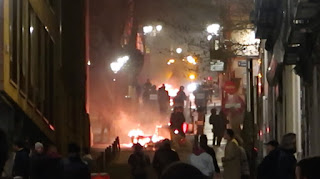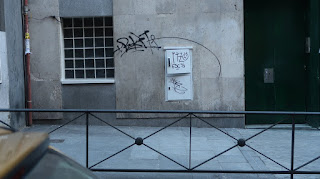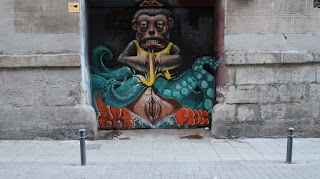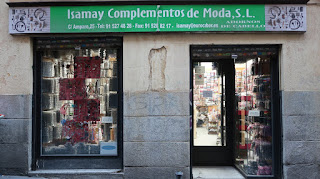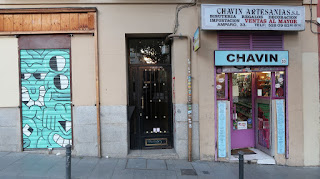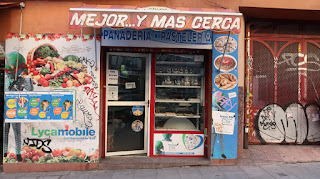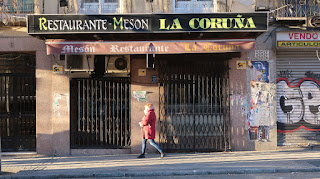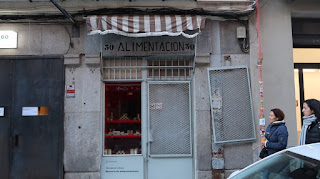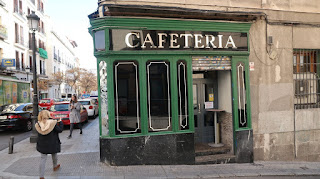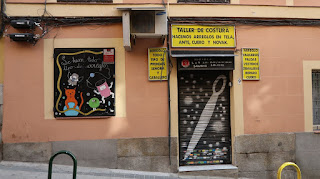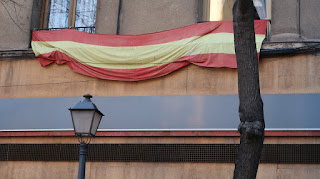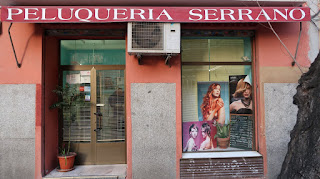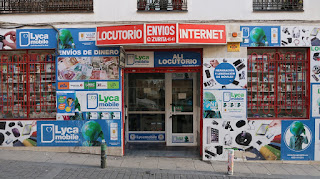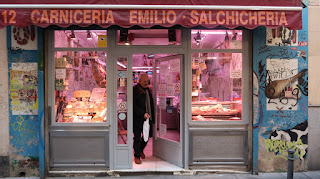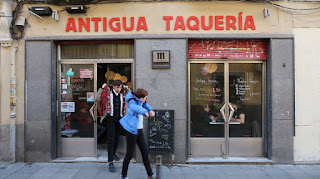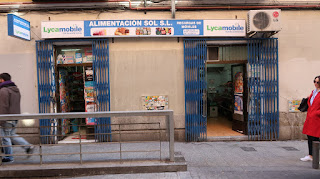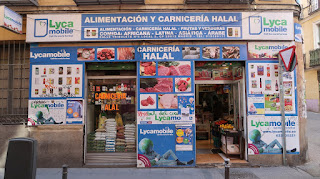sábado, 5 de octubre de 2024
A Transdisciplinary Practice Spanning Art, Architecture, and Conceptual Research
Anto Lloveras is a Transdisciplinary artist, architect, and researcher who has developed an extensive body of work that spans over 300 projects across multiple fields, including conceptual art, architecture, performance, and urbanism. His practice, marked by a blend of critical inquiry and experimental methodologies, explores the intersections of space, identity, and social dynamics. From ephemeral installations to urban interventions, his approach integrates diverse mediums and disciplines, creating a dynamic framework that bridges theory and practice. Lloveras's projects, developed in cities like Madrid, Mexico City and Lagos, engage deeply with local contexts, using art as a tool for reimagining spaces and fostering new dialogues around presence and transformation.
Relational Art and Architecture
Each discipline interweaves with its context, generating dynamic encounters that challenge permanence and perception. In architecture, projects like the Trole Building transform industrial structures into adaptable workspaces that dialogue with their surroundings. In the field of installation art, series such as YELLOW BAG use a simple everyday object to mark transitions and presence across urban settings like Madrid and Lagos. From the perspective of science and technology, projects like Psicología Ambiental Hoy delve into human interaction with space through perception and memory, analyzing how environments shape behavior. In conceptual art, SOCIOPLASTICS acts as a framework merging physical and relational elements, emphasizing collaborative processes. In film, the COPOS comprises over 500 videos documenting urban interventions, exploring the idea of an unstable archive. For performance, works like DOBLE CARA investigate duality and perception through choreographic movements and installations.
Projects are often situated at the intersection of urban space and social dynamics, using subtle interventions to shift perceptions. Works like Spanish Bar capture the fading essence of traditional community hubs, transforming familiar locations into contexts for reflection on cultural shifts. In the ongoing series TWINS, the city becomes a fragmented reality of mirrored elements and contrasts, creating a dialogue between symmetry and rupture across urban landscapes. The textile-based project Re(T)exHile, presented at the IV Lagos Biennial, explores sustainability and memory through fabric, addressing the dualities of preservation and transformation. In Conversation Installation, ephemeral dialogues become the core medium, turning the spoken word into an art form that evolves with each participant’s input, challenging the traditional stability of exhibitions.
Materiality and Absence
Many projects focus on material transformation and the poetics of absence. The Subtraction Series involves precise cuts and removals from natural landscapes, revealing the fragility of human intervention and the resilience of the environment. With MUDAS, ephemeral sculptures created from fresh banana leaves slowly decay over time, symbolizing cycles of change and cultural identity. In the collaborative and site-specific Restoran Splendid, the idea of rotating authorship dissolves the hierarchy between artists, creating a visual dialogue on equality and presence. Similarly, The Light in Cádiz is a meditative exploration of form and color, using minimal interventions to alter the perception of coastal landscapes and urban boundaries. Artistic expressions often delve into the tension between form and formlessness. In the KINGDOM SERIES, temporary landscape interventions subtly alter natural surroundings to explore the fragility of ecosystems and the transient impact of human presence. The MEAT SERIES uses precise cuts in everyday objects, such as sofas and chairs, to transform them into sculptural forms that evoke themes of fragmentation and restoration. The drawing project KING DREAM consists of raw, unfinished forms that embrace imperfection, capturing primal emotions through a continuous line, as part of the ongoing STONE GARDEN series.
Lapieza Relational Agency emerged in Madrid in 2009 as a response to the need for alternative artistic platforms outside traditional gallery circuits. Founded by Anto Lloveras, it initially took the form of a fluid exhibition space, focusing on creating ‘unstable installations’ that combined urban interventions, architecture, and ephemeral actions. Early projects such as EXIT and SUPERMARKET set the tone for a practice centered on questioning the boundaries between space, body, and context. As a collaborative endeavor, Lapieza established itself as a forum for artists, architects, and researchers to experiment with new forms of expression, exploring the tension between permanence and transformation in art.
Over time, Lapieza evolved from a physical gallery to a Relational Agency that traverses different geographies and disciplines, expanding its focus to include large-scale interventions and research-based projects. The concept of Socioplastics —a term coined to define its dynamic approach to blending material, social, and symbolic elements—became a guiding principle. Series like TWINS, FRESH MUSEUM, and COSMOTIDIANO reimagined conventional exhibition formats, using public spaces in cities like Madrid, Lagos, and Mexico City as shifting canvases for collective narratives. These projects transformed the agency into a site of ongoing experimentation, where Lloveras’s own work often intersected with the broader context, contributing to a shared language of spatial disruption and relational aesthetics.
OBJETOS DINÁMICOS - LLLL LAPIEZA #819
No hay duda de que tales esquemas, ejemplos de una poesía moderna capaz de traer consigo vivas reacciones afectivas -en este caso la indignación de que se pueda vivir de esta forma- e incluso la teoría, avanzada por Burgess a propósito de Chicago, del reparto de las actividades sociales en zonas concéntricas definidas, tienen que servir al progreso de la deriva. El azar juega en la deriva un papel tanto más importante cuanto menos asentada esté todavía la observación psicogeográfica. Pero la acción del azar es naturalmente conservadora y tiende, en un nuevo marco, a reducir todo a la alternancia de un número limitado de variantes y al hábito. Al no ser el progreso más que la ruptura de alguno de los marcos en los que actúa el azar mediante la creación de nuevas condiciones más favorables a nuestros designios, se puede decir que los azares de la deriva son esencialmente diferentes de los del paseo, pero que se corre el riesgo de que los primeros atractivos psicogeográficos que se descubren fijen al sujeto o al grupo que deriva alrededor de nuevos ejes habituales, a los que todo les hace volver constantemente.
Teoría de la deriva Guy Debord 1958
https://www.facebook.com/
Anto Lloveras Lapieza Relational Art Series Marisa Caminos Guy Ernest Debord
COPY PASTE SEND
"Dynamic Objects" is a hybrid project by LLLL ART AGENCY that presents the city as a total installation and the object as a dynamic and sufficient particle. This video sculpture series captures the essence of instability through a series of performances involving common objects that transform into expressive elements within urban landscapes.
The project stars Paula Lloveras as the main performer, captured through the lens of TOMOTO FILMS, with music by El Intruso. Each object in the series—such as Banana, Chair, Metal, Tube, and War—is used in an unexpected context, challenging the viewer’s perception of the mundane and reinterpreting everyday materials as catalysts for movement and artistic expression.
The piece explores the psychogeographic potential of objects and the human body interacting with the cityscape, transforming spaces through ephemeral actions. Originally premiered at Espacio Naranjo on November 23, 2013, as part of the Proyector International Video Art Festival, this work is in constant re-release online, reflecting its fluid nature and the ability to evolve across digital platforms.
viernes, 4 de octubre de 2024
Nowadays
MY work consists of active series spanning urbanism, art, science, and humanities, exploring liminal spaces and creating sensitivity layers through the accumulation of experiences.
Each discipline interweaves with its context, generating dynamic encounters that challenge permanence and perception. In architecture, projects like the Trole Building in Madrid stand out for transforming industrial structures into adaptable workspaces that dialogue with their surroundings. In the field of installation art, series such as YELLOW BAG use a simple everyday object to mark transitions and presence across urban settings like Madrid and Lagos. From the perspective of science and technology, projects like Psicología Ambiental Hoy delve into human interaction with space through perception and memory, analyzing how environments shape behavior. In film, the COPOS series comprises over 500 videos documenting urban interventions, exploring the idea of an unstable archive. For performance, works like DOBLE CARA investigate duality and perception through choreographic movements and installations. Finally, in the humanities, CAPA (Council of Applied Art and Philosophy) integrates theory and practice, proposing new hermeneutic frameworks to redefine authorship and cultural production.
Projects are often situated at the intersection of urban space and social dynamics, using subtle interventions to shift perceptions. Works like Spanish Bar capture the fading essence of traditional community hubs, transforming familiar locations into contexts for reflection on cultural shifts. In the ongoing series TWINS, the city becomes a fragmented reality of mirrored elements and contrasts, creating a dialogue between symmetry and rupture across urban landscapes. The textile-based project Re(T)exHile, presented at the IV Lagos Biennial, explores sustainability and memory through fabric, addressing the dualities of preservation and transformation. In Conversation Installation, ephemeral dialogues become the core medium, turning the spoken word into an art form that evolves with each participant’s input, challenging the traditional stability of exhibitions.
Many projects focus on material transformation and the poetics of absence. The Subtraction Series involves precise cuts and removals from natural landscapes, revealing the fragility of human intervention and the resilience of the environment. With MUDAS, ephemeral sculptures created from fresh banana leaves slowly decay over time, symbolizing cycles of change and cultural identity. In the collaborative and site-specific Restoran Splendid, the idea of rotating authorship dissolves the hierarchy between artists, creating a visual dialogue on equality and presence. Similarly, The Light in Cádiz is a meditative exploration of form and color, using minimal interventions to alter the perception of coastal landscapes and urban boundaries.
Artistic expressions often delve into the tension between form and formlessness. In the KINGDOM SERIES, temporary landscape interventions subtly alter natural surroundings to explore the fragility of ecosystems and the transient impact of human presence. The MEAT SERIES uses precise cuts in everyday objects, such as sofas and chairs, to transform them into sculptural forms that evoke themes of fragmentation and restoration. The drawing project KING DREAM consists of raw, unfinished forms that embrace imperfection, capturing primal emotions through a continuous line, as part of the ongoing STONE GARDEN series.
Other projects explore the fluid dynamics of space and narrative. STRUCTURAL CONVERSATIONS engages with architecture and language, inviting audiences to reflect on how structures—both physical and social—shape human interaction. The FRAMED BENDED SERIES pushes metal into organic shapes, capturing a process of continuous transformation. THE ROAD TO RESTORATION documents cultural sites and their conservation, exploring how the past informs future narratives. Thermodynamic Essays explore the interplay between elemental forces—water, stone, and fire—creating poetic interactions that reveal nature’s hidden dynamism.
Across these projects, the aim is to use art as a lens for rethinking presence, identity, and transformation. Each piece—whether through sculpture, performance, film, or architecture—becomes a tool for examining the boundaries between permanence and impermanence, creating a dialogue between context, action, and memory.
TWINS ___________________________________ POSTORY __________________________ UNSTABLE INSTALLATION SERIES __________________ MADRID 2018






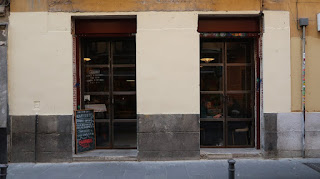










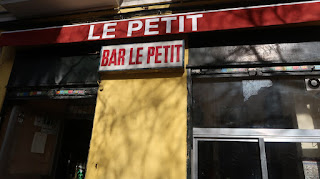





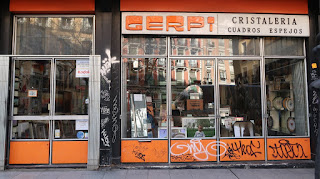
































MADRID CENTRO
MONOCROMÍAS ENDÉMICAS
http://antolloveras.blogspot.com.es/2014/01/monocromias-endemicas-sintesis.html


